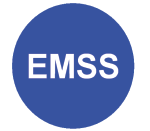Train schedule analysis and optimization with the Max-Plus Automaton
- a,c 1Institute of Analysis and Scienti c Computing, Vienna University of Technology, Wiedner Hauptstraße 8-10,
1040 Vienna, Austria - b dwh Gmbh, Neustiftgasse 57-59, 1070 Vienna, Austria
Cite as
Edthofer A., Bicher M., Breitenecker F. (2020). Train schedule analysis and optimization with the Max-Plus Automaton. Proceedings of the 32nd European Modeling & Simulation Symposium (EMSS 2020), pp. 161-164. DOI: https://doi.org/10.46354/i3m.2020.emss.022
Abstract
This work deals with methods to improve efficiency of train networks and applies them on the example of Austrian freight train track. The aim is to analyze the utilization of the capacity of the tracks and, if possible,
to optimize them. We use implementations of the Max-Plus automaton and apply them for given freight train track data of a small rail network within Vienna, the capital city of Austria. The theoretical background
is the Max-Plus algebra, with which the Max-Plus automaton is described. This model deals in general with microscopic networks. In this paper the Max-Plus automaton is applied to a schedule of freight trains,
which run in the southwest of Vienna. It shows, that the efficiency of the utilization of the tracks can be increased, if the sequence of the trains is changed.
References
- Borndörfer, R., Klug, T., Lamorgese, L., Mannino, C., Reuther, M., and Schlechte, T. (2018). Handbook of Optimization in the Railway Industry, volume 268. Springer.
- Butkovič, P. (2010). Max-linear systems: theory and algorithms. Springer Science & Business Media.
- Heidergott, B., Olsder, G. J., and van der Woude, J. (2014). Max Plus at work: modeling and analysis of synchronized systems: a course on Max-Plus algebra and its applications, volume 48. Princeton University
Press.
- Lindner, T. (2011). Applicability of the analytical uic code 406 compression method for evaluating line and station capacity. Journal of Rail Transport Planning and Management, 1:49–57.
- UNECE (2020). United nations economic commission for europe statistical database - trainsport - railway traffic.
